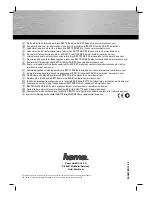
PAGE 18
The output circuit of a transmitter consists of inductors and capacitors, usually in a
series/parallel configuration called a “pi network”. The transmission line can be thought of as a
long string of capacitors and inductors in series/parallel, and the antenna is a kind of resonant
circuit. At any given RF frequency, each of these can exhibit resistance, and impedance in the
form of capacitive or inductive “reactance”.
Transmitters, transmission lines, antennas, and impedance
The output circuit of a transmitter, the transmission line, and the antenna, all have a
characteristic impedance. For reasons beyond the scope of this document, the standard
impedance is nominally 50 ohms resistive, with zero capacitive and zero inductive components.
When all three parts of the system have the same impedance, the system is said to be “matched”,
and maximum transfer of power from the transmitter to the antenna occurs. While the transmitter
output circuit and transmission line are of fixed, carefully designed impedance, the antenna
presents 50-ohm, non-reactive load only at its natural resonant frequencies. At other frequencies,
it will exhibit capacitive or inductive reactance, causing it to have an impedance other than 50
ohms.
When the impedance of the antenna is different from that of the transmitter and transmission
line, a “mismatch” is said to exist. In this case, some of the RF energy from the transmitter is
reflected from the antenna back down the transmission line and into the transmitter. If this
reflected energy is strong enough, it can damage the transmitter’s output circuits.
The ratio of transmitted to reflected energy is called the “standing wave ratio”, or SWR. An
SWR of 1 (sometimes written 1:1) indicates a perfect match. As more energy is reflected, the
SWR increases to 2, 3, or higher. As a general rule, modern solid state transmitters must operate
with an SWR of 2 or less. Tube exciters are somewhat more tolerant of high SWR. If a 50 ohm
antenna is resonant at the operating frequency, it will show an SWR close to 1. However, this is
usually not the case; operators often need to transmit at frequencies other than resonance,
resulting in a reactive antenna and a higher SWR.
where F = Forward power (watts), R = Reflected power (watts)
SWR is measured using a device called an “SWR bridge”, inserted in the transmission line
between the transmitter and the antenna. This circuit measures forward and reflected power from
which SWR may be calculated (some meters calculate SWR for you). More advanced units can
measure forward and reflected power simultaneously, and show these values and SWR at the
SWR
=
1
+
R
F
1
−
R
F

































